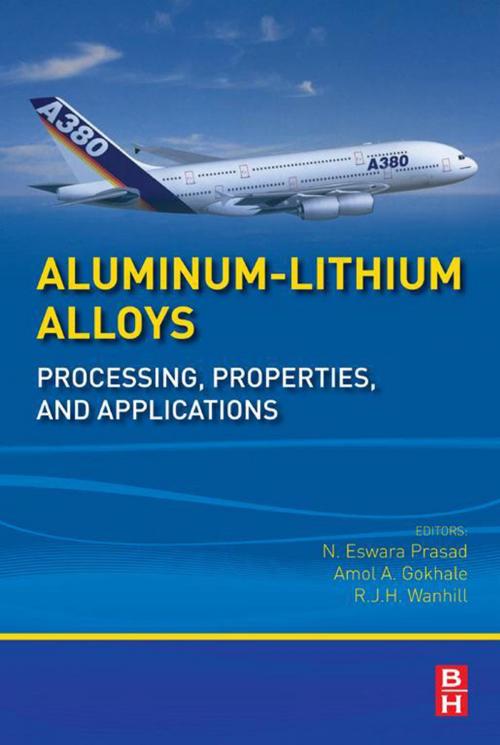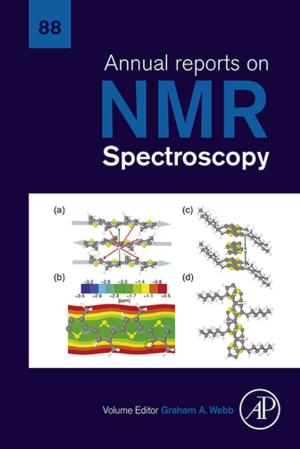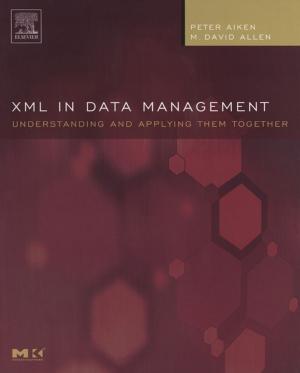Aluminum-Lithium Alloys
Processing, Properties, and Applications
Nonfiction, Science & Nature, Technology, Metallurgy, Material Science| Author: | ISBN: | 9780124016798 | |
| Publisher: | Elsevier Science | Publication: | September 20, 2013 |
| Imprint: | Butterworth-Heinemann | Language: | English |
| Author: | |
| ISBN: | 9780124016798 |
| Publisher: | Elsevier Science |
| Publication: | September 20, 2013 |
| Imprint: | Butterworth-Heinemann |
| Language: | English |
Because lithium is the least dense elemental metal, materials scientists and engineers have been working for decades to develop a commercially viable aluminum-lithium (Al-Li) alloy that would be even lighter and stiffer than other aluminum alloys. The first two generations of Al-Li alloys tended to suffer from several problems, including poor ductility and fracture toughness; unreliable properties, fatigue and fracture resistance; and unreliable corrosion resistance.
Now, new third generation Al-Li alloys with significantly reduced lithium content and other improvements are promising a revival for Al-Li applications in modern aircraft and aerospace vehicles. Over the last few years, these newer Al-Li alloys have attracted increasing global interest for widespread applications in the aerospace industry largely because of soaring fuel costs and the development of a new generation of civil and military aircraft. This contributed book, featuring many of the top researchers in the field, is the first up-to-date international reference for Al-Li material research, alloy development, structural design and aerospace systems engineering.
- Provides a complete treatment of the new generation of low-density AL-Li alloys, including microstructure, mechanical behavoir, processing and applications
- Covers the history of earlier generation AL-Li alloys, their basic problems, why they were never widely used, and why the new third generation Al-Li alloys could eventually replace not only traditional aluminum alloys but more expensive composite materials
- Contains two full chapters devoted to applications in the aircraft and aerospace fields, where the lighter, stronger Al-Li alloys mean better performing, more fuel-efficient aircraft
Because lithium is the least dense elemental metal, materials scientists and engineers have been working for decades to develop a commercially viable aluminum-lithium (Al-Li) alloy that would be even lighter and stiffer than other aluminum alloys. The first two generations of Al-Li alloys tended to suffer from several problems, including poor ductility and fracture toughness; unreliable properties, fatigue and fracture resistance; and unreliable corrosion resistance.
Now, new third generation Al-Li alloys with significantly reduced lithium content and other improvements are promising a revival for Al-Li applications in modern aircraft and aerospace vehicles. Over the last few years, these newer Al-Li alloys have attracted increasing global interest for widespread applications in the aerospace industry largely because of soaring fuel costs and the development of a new generation of civil and military aircraft. This contributed book, featuring many of the top researchers in the field, is the first up-to-date international reference for Al-Li material research, alloy development, structural design and aerospace systems engineering.
- Provides a complete treatment of the new generation of low-density AL-Li alloys, including microstructure, mechanical behavoir, processing and applications
- Covers the history of earlier generation AL-Li alloys, their basic problems, why they were never widely used, and why the new third generation Al-Li alloys could eventually replace not only traditional aluminum alloys but more expensive composite materials
- Contains two full chapters devoted to applications in the aircraft and aerospace fields, where the lighter, stronger Al-Li alloys mean better performing, more fuel-efficient aircraft















